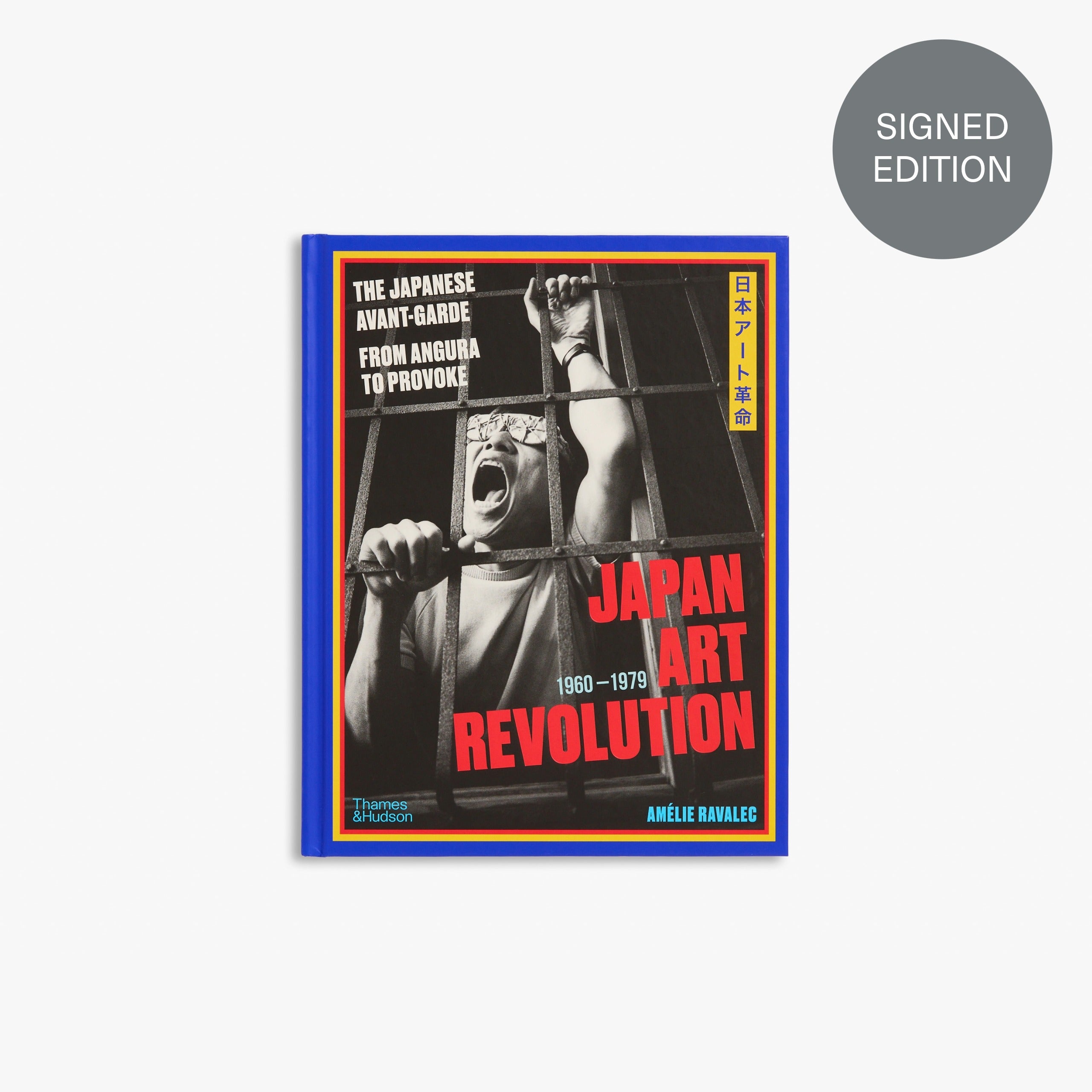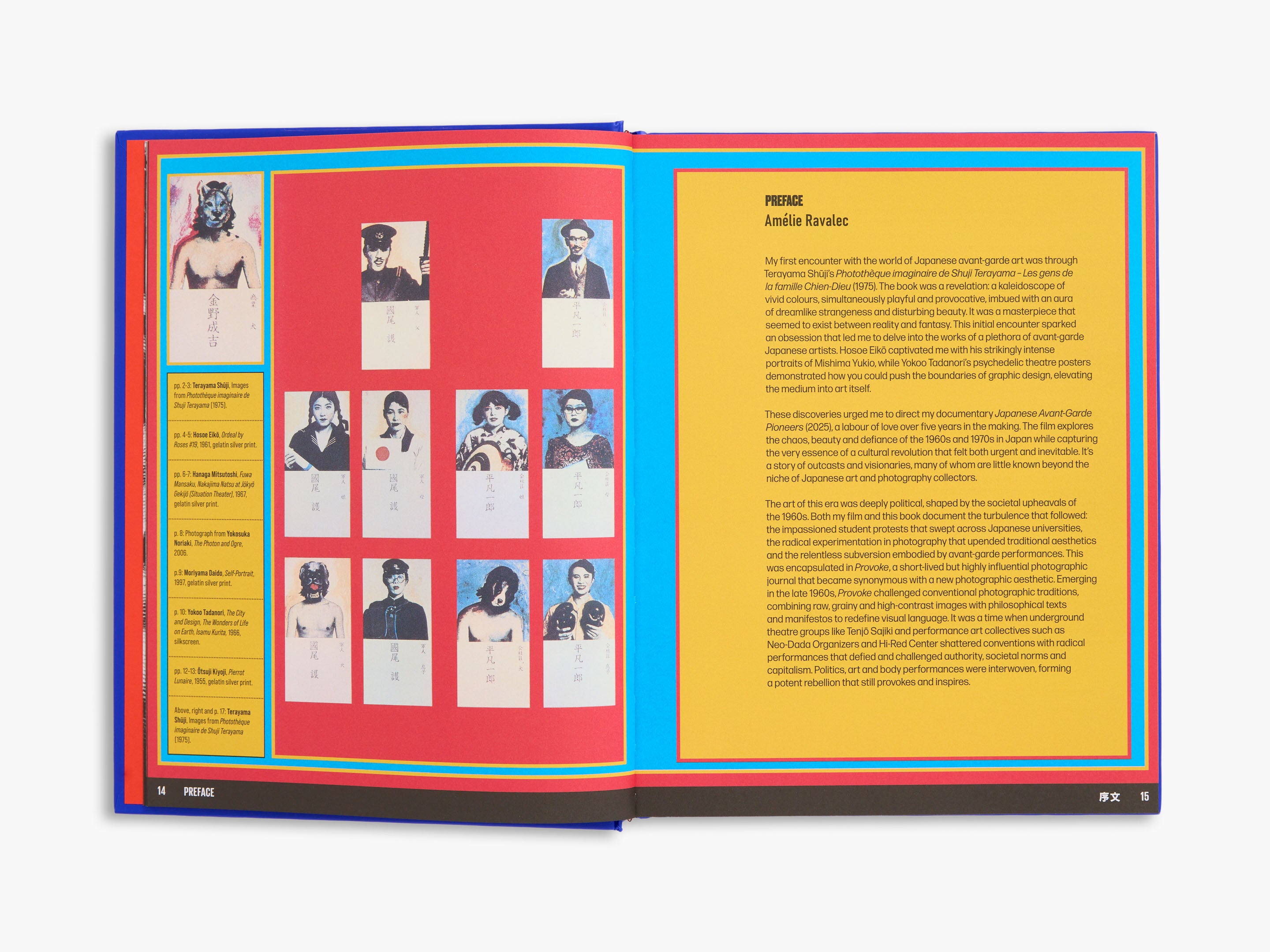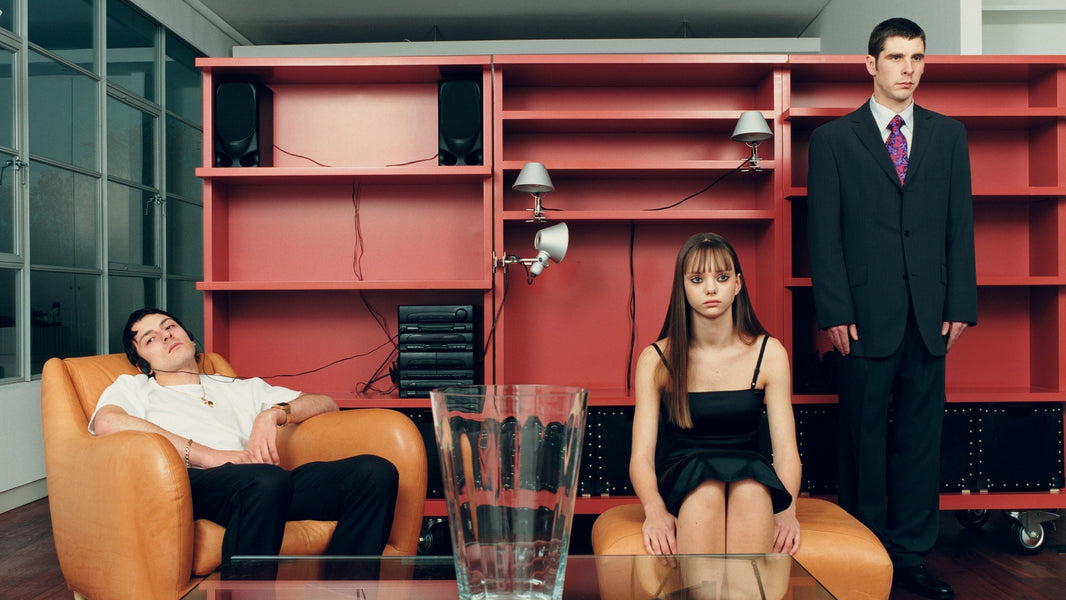© Hosoe Eikō. Courtesy of Eikoh Hosoe Photographic Art Institute and Kenji Hosoe
The turbulent times of post-war Japan inspired an artistic explosion in the country, with the emergence of a revolutionary scene of avant-garde artists who pioneered many disciplines: experimental and erotic photography, ‘Angura’ theatre and underground street performances, apocalyptic Butoh dance, surreal illustrations and seminal graphic design.
Featuring over 600 captivating artworks, Japan Art Revolution offers a nuanced understanding of this thriving scene. Insightful texts from esteemed experts, curators, academics and archivists accompany photographs, film stills, theatre posters and illustrations from such iconic artists as Moriyama Daido, Hosoe Eiko, Araki Nobuyoshi, Ishiuchi Miyako, Awazu Kiyoshi, Hanaga Mitsutoshi, Nakahira Takuma, Tanabe Santaro and more.
In this extract from the book, author and book designer Amélie Ravalec shares her first encounter with this world and why she found it so captivating.
© Hosoe Eiko. Courtesy of Eikoh Hosoe Photographic Art Institute.
My first encounter with the world of Japanese avant-garde art was through Terayama Shūji’s Photothèque imaginaire de Shuji Terayama – Les gens de la famille Chien-Dieu (1975). The book was a revelation: a kaleidoscope of vivid colours, simultaneously playful and provocative, imbued with an aura of dreamlike strangeness and disturbing beauty. It was a masterpiece that seemed to exist between reality and fantasy. This initial encounter sparked an obsession that led me to delve into the works of a plethora of avant-garde Japanese artists. Hosoe Eikō captivated me with his strikingly intense portraits of Mishima Yukio, while Yokoo Tadanori’s psychedelic theatre posters demonstrated how you could push the boundaries of graphic design, elevating the medium into art itself.
These discoveries urged me to direct my documentary Japanese Avant-Garde Pioneers (2025), a labour of love over five years in the making. The film explores the chaos, beauty and defiance of the 1960s and 1970s in Japan while capturing the very essence of a cultural revolution that felt both urgent and inevitable. It’s a story of outcasts and visionaries, many of whom are little known beyond the niche of Japanese art and photography collectors.
© Yokoo Tadanori. Courtesy of Yokoo’s Circus Co.
The art of this era was deeply political, shaped by the societal upheavals of the 1960s. Both my film and this book document the turbulence that followed: the impassioned student protests that swept across Japanese universities, the radical experimentation in photography that upended traditional aesthetics and the relentless subversion embodied by avant-garde performances. This was encapsulated in Provoke, a short-lived but highly influential photographic journal that became synonymous with a new photographic aesthetic.
Emerging in the late 1960s, Provoke challenged conventional photographic traditions, combining raw, grainy and high-contrast images with philosophical texts and manifestos to redefine visual language. It was a time when underground theatre groups like Tenjō Sajiki and performance art collectives such as Neo-Dada Organizers and Hi-Red Center shattered conventions with radical performances that defied and challenged authority, societal norms and capitalism. Politics, art and body performances were interwoven, forming a potent rebellion that still provokes and inspires.
© Hanaga Mitsutoshi. Courtesy of Mitsutoshi Hanaga Project Committee
This generation of artists grew up in the shadow of the Second World War, and many of them experienced as children the bombings of Tokyo – life-altering events that would profoundly shape their artistic visions in the decades that followed. Themes of Eros and Thanatos – the interplay of desire and death – permeated many influential works, from Araki Nobuyoshi’s provocative photography to Saeki Toshio’s surreal illustrations, where eroticism and existential dread coalesced. The trauma of the atomic bomb found poignant expression in Kawada Kikuji’s now classic photobook The Map (1965), which grappled with the aftermath of Hiroshima, and Hosoe Eikō’s film Navel and A-Bomb (1960), a haunting reflection on the scars left by that devastation. Butoh, a new and harrowing form of dance, emerged as an exploration of humanity’s darkness and light, drawing from the aftermath of the nuclear apocalypse. This visceral art form transformed human movement into a visual and emotional symphony, with performances that were simultaneously grotesque and transcendent, exploring themes of life, death and rebirth with an otherworldly intensity.
From left to right: © Nakatani Tadao. Courtesy of Keio University Art Center and Butoh Laboratory, Japan / © Ikegami Naoya. Courtesy of Ikegami Naoya
[...]
Despite years of research and creative output on the subject, the world of Japanese avant-garde remains an endless source of fascination for me. Each new discovery feels like peeling back another layer of a complex universe that continues to influence fashion, music and culture today.
Words by Amélie Ravalec.
Japan Art Revolution by Amélie Ravalec is available now.













